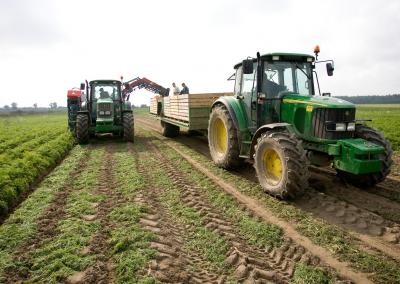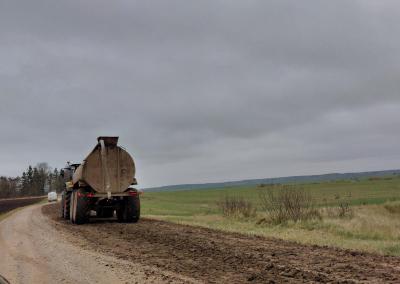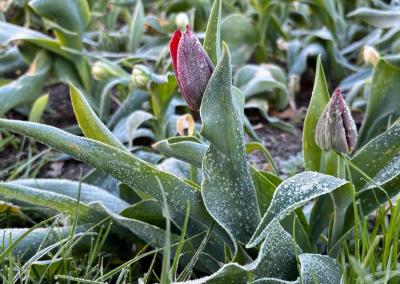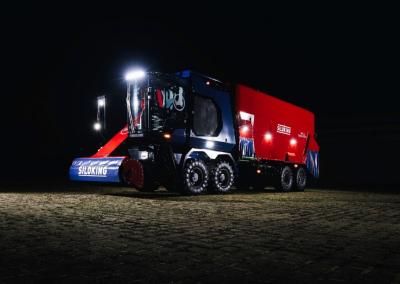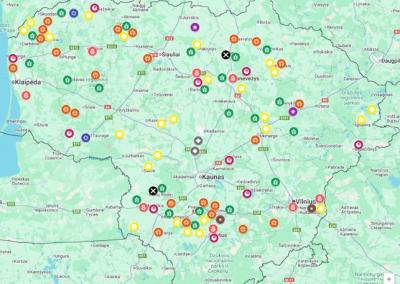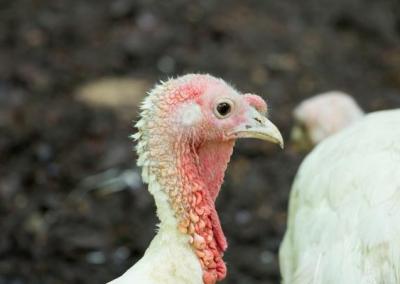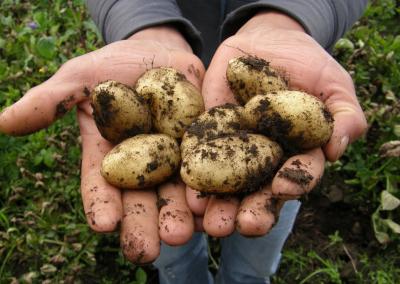How to revive a flower bed damaged by hail and heavy rain
Severe summer hailstorms are one of the natural disasters that flowerbeds, gardens and vegetable gardens are powerless against. The consequences of storms, hailstorms and egg-sized hail are too many to mention. How much effort will it take to restore damaged flowerbeds, knowing that they will not soon regain their former blooming appearance?
General cleaning of a damaged flower bed
The first step – in a damaged flower bed is to collect all the hail ice from the soil surface in order to remove the burning cold from the green parts and roots of the plants as quickly as possible. Hail can be swept away from loose, unplanted spaces with a small broom or fan rake, but it is better to carefully hand-pull the ice chunks out from underneath the shrubs so that the rake does not further damage the affected plants.
All broken stems, leaves, petals and blossoms torn off by wind gusts should also be removed from the flowerbed. They cannot be saved, and the remains of the plants left in the flowerbed will rot and can become a haven for insect pests and a breeding ground for harmful micro-organisms and fungi.
If the wind has knocked over ornamental fencing, or broken ceramic or plastic pots containing annual plants, then dispose of the unusable items and repair and replace anything that can still be repaired and saved.
Flowers from broken pots should be transferred to new pots as soon as possible, trying to preserve the clump of soil on the roots. It is preferable to cut off the flowers and some of the buds after transplanting, as the plants will need strength to root and adapt to the new medium.
Restore balance in the flower bed
If you have liana and climbing plants growing on ornamental supports and espaliers in your flower bed, these plants have probably suffered more from the elements than others on the ground. Gusts of squally winds almost always tear the stems of lianas from their support structures, and arches, pergolas, trellises and espaliers are sometimes uprooted from the ground.
In this case, the first step is to rebuild the supports and untangle the tangled stems of the lianas. Try to do this slowly and carefully so as not to tear off any surviving leaves. However, be aware that some shoots may need to be cut off.The stems of open flowers and the powerful flower heads of some flowers (cardoons, irises, phlox) may have been knocked to the ground by heavy rain and wind. Check that they are alive, and if so, lift them up and try to tie them to the support stakes, adjusting them to the desired height.
Cut the waste leaves
Leaved plants are most affected by hail, heavy rain and sleet. Begonias, bluebells and aloes have leaves that are punctured by hailstones, while roses, astilbes and other flowers with small leaves will not show as much damage. Thin, pointed leaves will be stuck to the ground and some will be broken by hail. But the same is true for all plants – they simply cannot resist and withstand the powerful flow of ice coming from the sky.
Before you rescue plants, you need to assess the extent of the damage and the chances of recovery. Remember that perennial plants recover from stress more easily and quickly than annuals. If the disaster strikes early in the season and summer plants have been badly damaged, it is easier to replace them with new seedlings or sow them with fast-growing flowers that will have time to bloom before the end of the season.
Yearlings with less than half of their green mass damaged can be left as they are, with only the leaves that are most affected removed. After the bush has recovered and grown young leaves, the dead parts can be cut back.
Unfortunately, it will not be possible to save the petals of broken inflorescences. They must be carefully cut off at the bottom of the petal, above one of the sepals. Make the cut at a 45-degree angle to prevent moisture from accumulating in the area.
Fungicide treatment
After heavy precipitation, the soil in the flowerbeds and beds remains moist for a long time, especially if the surface has been mulched with sawdust, wood chips or bark. To speed up the drying of the soil, it makes sense to temporarily remove the mulch from the front wheels of the trees and to gently shake the soil therein. The water will evaporate more quickly from the loosened soil.
The first days after a hailstorm – the most dangerous period when high humidity combined with high summer temperatures can provoke the spread of fungal diseases in the flower bed. The risk of infection is significantly increased if the plants have been damaged by hail: every leaf wound and every broken stem is an open gateway for infection.
To prevent disease, it is recommended to spray flowers prophylactically with a broad-spectrum fungicide. Be sure to use a growth stimulator as well – it will help plants recover much faster.Fertilising a damaged flower bed
No matter how quickly you want to revive your flowers, you should not fertilise them in the first few days after a heavy rain or hailstorm, even if the fertilisation plan was in place before the hail. Plants have been stressed and weakened and simply cannot absorb nutrients. Over-nutrition in such a situation can even worsen the situation by reducing disease resistance.
Wait for the soil to dry out, for the flowers to strengthen and for new green mass to appear on the flowers before fertilising them (even if it is the same old routine). Sometimes it is advisable to halve the normal rate of fertiliser to avoid metabolic stress.
Nitrogen should not be applied in the second half of the summer after a hailstorm, as this is the period when flowers start to prepare for the coming winter and do not need active growth stimulation. Use a complex mineral fertiliser rich in potassium and phosphorus to boost the immune system and bud formation for next year. But after the hailstorms of early summer, fertilise more with nitrogen – it will help to produce healthy leaves more quickly.



